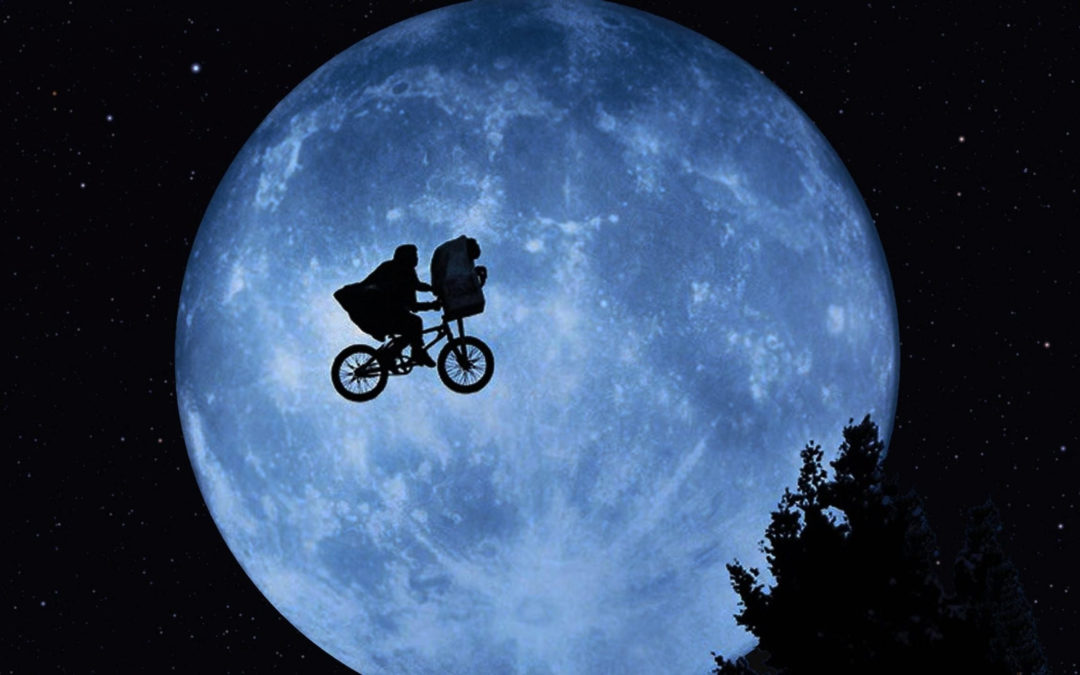Image source: Buzz.tt
In an age where films are more accessible to watch within the comfort of one’s home, one might wonder why somebody would bother seeing a film that isn’t a new release in theaters. After all, the price of a single ticket – in other words, a single viewing – could easily pay for one month’s access to a streaming service where they could watch not just one, but any number of available titles as many times as they can. However, those who do take the opportunity to see an older film at their local cineplex could assuredly explain why the experience is worth the price: some films – if not all films – are simply at their best when shown on the big screen. Whereas one’s home may be littered with distractions and without a screen big enough to keep one’s attention throughout the duration of a given feature, the theater is specifically designed so that such distractions are kept to a minimum. The screen towers above all else, the auditorium is otherwise dark and quiet (barring any disrespectful theater patrons), these are all-around ideal conditions for the average cinephile. Seeing a new release under these conditions may be favorable enough, but to see an older film that one considers an all-time favorite, or is at least curious enough to see how it compares to watching at home, is something else entirely. Film distributors and theaters seem to be well aware of this, and in recent years, they’ve started to provide more opportunities for such events.
Of course, if one were to go back in time to just two years prior, it’s very easy to understand why theaters would be willing to exhibit older films: they had nothing else to offer. The COVID-19 pandemic, which was first declared in March 2020 and is still ongoing, shut down theaters and film productions across the nation, and while theaters were quick to reopen as soon as possible, studios didn’t exactly provide much to work with. Most productions had to be delayed far longer than desirable, and even recently completed films had their release dates pushed much further back due to concerns about financial underperformance. With no new releases to screen, theaters have had to turn to much older cinematic works in order to draw in audiences and try to stay afloat in these troubling times. “The pandemic spurred on a greater proliferation of re-releases in movie theaters since there were no new movies to come by,” claims Comscore senior media analyst Paul Dergarabedian. “Theaters are looking for more than just brand-new movies to put on their screens and with some 30% fewer releases in the mix this year, it’s no wonder that this is a welcome trend.”
In many respects, the re-release of an older film is a win-win situation for both theaters and distributors. Both split the sales of the tickets sold for a given film, but it’s usually the distributor that gets the larger percentage; that’s not always the case when the film in question is not a new release, so whenever theaters exhibit older films, there’s a strong chance that they’ll get to keep more of the ticket sales for themselves. Distributors still benefit greatly from this situation though, as they not only still earn some revenue from these sales, but also generate new interest in these older films through the high publicity that is often given to these re-releases. However the situation plays out, it’s usually good business, as Dergarabedian claims.”Re-releases are great for theaters because it gives them more movies to put on their screens,” he said. “And it’s great for the studios who can dig into their vaults and earn revenues on films that were released many years ago, but now regain a new life on the big screen.”
Even before the pandemic started though, re-releases weren’t necessarily uncommon, but they didn’t go on for quite as long as some of the more recent instances of older films coming back to theaters. For example, Fathom Events, a theatrical exhibition company co-owned by major theater chains AMC, Cinemark, and Regal, has been known to provide older films for theaters to show for at least one or two days (often partnering with Turner Classic Movies in order to do so). Smaller theater chains are also known to have their own programs in which they show older films on a regular basis, with Harkins Theaters’ Tuesday Night Classics and Flashback Cinema, which collaborates with a variety of theater chains throughout the nation, being some of the more notable examples. However, such programs limit the showing of a given film to at most a small handful of screenings, never spreading out across the nation enough for film distributors to advertise as a major event.
Recently though, distributors like Universal and Paramount are taking the opportunity to re-release their films in a manner very much akin to how they’d put out a newer film, giving them wide releases and allowing them to play for an extended period of time. One of the most recent of these re-releases, the 40th anniversary celebration of Steven Spielberg’s “E.T. the Extra-Terrestrial”, managed to earn $1.07 million over the previous weekend, not necessarily a massive amount, but enough for it to outgross such new releases as “Emily the Criminal” and “Mack & Rita”.
In the coming weeks, more re-releases are set to take place: Disney/LucasFilm’s 2016 film “Rogue One: A Star Wars Story” will return to the big screen on August 26th to promote the upcoming Disney+ series “Andor”; another Spielberg classic, the 1975 summer blockbuster “Jaws”, hopes to perform swimmingly at the box office starting Labor Day Weekend. That same weekend will also see “The More Fun Stuff Version” of “Spider-Man: No Way Home”, the reigning box office champion of the previous year.
The end of summer does not mean the end of re-releases though. Later in September, 20th Century Fox will re-release James Cameron’s 2009 film “Avatar”, currently the highest grossing film at the worldwide box office, as a means of promoting its upcoming sequel “Avatar: The Way of Water”, which is set to premiere in December. Five months later, another Cameron blockbuster, 1997’s “Titanic”, will come back to theaters just in time for Valentine’s Day. All of these, and possibly many more, demonstrate just how lucrative a re-release can be. After all, some films are simply experienced best when experienced on the big screen, and hopefully, there will be more events like these to further prove this point.




